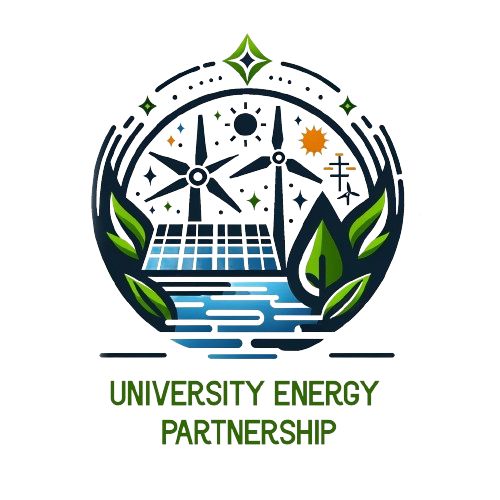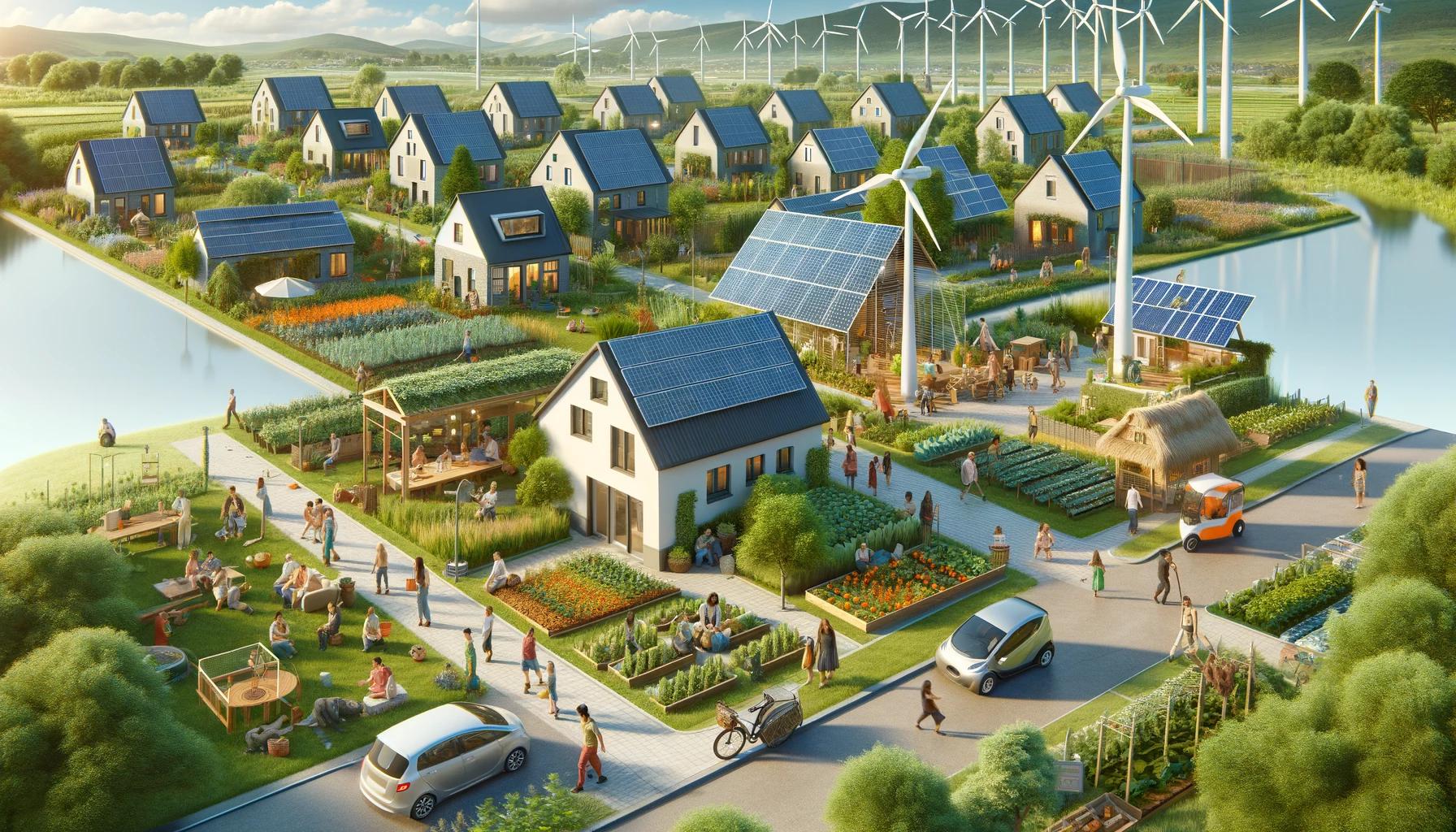In an era where climate change and environmental concerns have become paramount, the quest for sustainable energy solutions has never been more crucial. Sustainable energy communities, which promote clean, renewable, and efficient energy production and consumption, are emerging as a promising way to address these challenges. In this article, we will explore the concept of sustainable energy communities and their benefits and delve into a real-world case study to better understand their potential.
Understanding Sustainable Energy Communities
A sustainable energy community, often referred to as an SEC, is a localized group of individuals, businesses, or organizations that collaborate to generate, distribute, and consume energy sustainably. These communities prioritize reducing carbon emissions, improving energy efficiency, and embracing renewable energy sources like solar, wind, and biomass. The core principles of sustainable energy communities include:
Energy Independence
SECs strive to reduce their dependence on fossil fuels and centralized energy grids. They become more self-reliant and less vulnerable to energy price fluctuations and supply disruptions by generating their own clean energy.
Energy Efficiency
Efficiency is a cornerstone of sustainable energy communities. They employ advanced technologies and best practices to minimize energy waste, lower energy bills, and reduce environmental impact.
Renewable Energy Adoption
Sustainable energy communities champion the use of renewable energy sources such as solar panels, wind turbines, and geothermal systems. These sources are not only environmentally friendly but also offer long-term cost savings.
Community Engagement
Active community involvement is vital for the success of SECs. Residents, businesses, and local governments collaborate to develop and implement sustainable energy solutions that meet the specific needs of their community.
The Importance of Sustainable Energy Communities
In an era characterized by environmental challenges and a growing need for energy transition, the concept of Sustainable Energy Communities (SECs) has gained paramount importance. These communities play a pivotal role in addressing critical global issues and offer numerous benefits on both local and global scales.
At the forefront of the importance of SECs is their role in mitigating climate change. By prioritizing renewable energy sources and energy efficiency measures, SECs significantly reduce greenhouse gas emissions. This reduction is vital in achieving global climate goals, such as those outlined in the Paris Agreement, and in curbing the adverse effects of climate change, such as extreme weather events and rising sea levels.
SECs also serve as a catalyst for reducing reliance on fossil fuels. By generating clean energy locally, these communities contribute to energy independence, reducing their vulnerability to volatile energy markets and supply disruptions. Moreover, SECs promote economic resilience by creating job opportunities in the renewable energy sector and helping to stabilize energy costs for residents and businesses.
In addition to environmental and economic benefits, SECs foster a sense of community and empowerment among their members. They encourage active participation, collaboration, and education, promoting a sustainable way of life that extends beyond energy practices.
In summary, Sustainable Energy Communities are of utmost importance in the transition towards a more sustainable and resilient future. They are essential pillars in the fight against climate change, the pursuit of energy independence, and the enhancement of community well-being, making them a model that deserves widespread recognition and adoption.
Key Components of Sustainable Energy Communities
Sustainable Energy Communities (SECs) are driven by a set of core components that collectively enable them to achieve their sustainability goals. Understanding these key components is essential for successfully building and sustaining such communities.
1. Renewable Energy Sources: SECs prioritize the use of renewable energy sources, such as solar, wind, hydro, and geothermal power. These sources harness nature’s energy without depleting finite resources or causing harmful emissions, ensuring a cleaner and more sustainable energy supply.
2. Energy Storage and Distribution: Effective energy storage and distribution systems are critical for SECs. They allow for the efficient capture and utilization of renewable energy, reducing waste and ensuring a stable energy supply even when renewables fluctuate due to weather conditions.
3. Energy Efficiency Measures: SECs emphasize energy conservation and efficiency through practices like improved building insulation, energy-efficient appliances, and smart grid technologies. These measures minimize energy waste, lower utility bills, and reduce environmental impact.
4. Community Engagement and Participation: Active involvement of residents, businesses, and local institutions is fundamental. SECs foster a culture of sustainability through education, outreach, and collaborative decision-making. Community engagement ensures that everyone benefits from and contributes to the community’s energy initiatives.
5. Regulatory Support and Policies: Supportive government policies and incentives are essential components. Policies that encourage renewable energy adoption, provide tax incentives, and simplify permitting processes can greatly facilitate the development of SECs.
6. Monitoring and Data Analysis: SECs rely on data collection and analysis to track progress, identify areas for improvement, and optimize energy usage. Monitoring systems help communities make informed decisions and meet sustainability goals.
Incorporating these key components into the fabric of a sustainable energy community paves the way for long-term success, fostering economic resilience, environmental stewardship, and community empowerment.
The Benefits of Sustainable Energy Communities
Creating and nurturing sustainable energy communities offers a multitude of benefits, ranging from economic advantages to environmental stewardship:
1. Economic Savings
Residents and businesses in SECs often experience lower energy costs due to increased efficiency and the use of renewable energy sources. The money saved can be reinvested in the local economy, leading to job creation and economic growth.
2. Reduced Carbon Emissions
By relying on renewable energy sources and energy-efficient practices, SECs significantly decrease their carbon footprint. This helps combat climate change and promotes cleaner air and water quality.
3. Energy Security
Sustainable energy communities are less susceptible to energy supply disruptions, which can be critical during extreme weather events or other emergencies. This increased resilience enhances overall community stability.
4. Local Job Opportunities
Developing, installing, and maintaining renewable energy infrastructure in SECs creates local job opportunities, stimulating economic development and reducing unemployment rates.
5. Improved Quality of Life
Lower pollution levels and access to cleaner energy sources contribute to a healthier and more enjoyable living environment. Residents often experience an improved quality of life, both physically and mentally.
A Case Study: The Transition to Sustainability in Greensville
To better illustrate the concept of sustainable energy communities, let’s delve into a real-world case study of Greensville, a fictional town that embarked on a journey toward sustainability.
Background
Greensville, a small rural town in the Midwest, faced economic challenges and high energy costs due to its reliance on fossil fuels. In response, a group of passionate residents and local leaders decided to transform Greensville into a sustainable energy community.
Key Initiatives
- Solar Power Generation: The town installed solar panels on municipal buildings, schools, and residential rooftops. This initiative reduced energy bills and created local solar installation and maintenance jobs.
- Wind Energy: Greensville capitalized on its windy climate by erecting wind turbines on the outskirts of town. These turbines generated clean, renewable energy, and the surplus was sold back to the grid, providing a new source of revenue for the community.
- Energy Efficiency Programs: Local businesses and households participated in energy efficiency programs. They received incentives to upgrade insulation, lighting, and heating systems, leading to reduced energy consumption and cost savings.
- Community Engagement: The town organized workshops and community events to educate residents about sustainable energy practices. Local schools incorporated sustainability into their curriculum, ensuring that future generations would carry forward the SEC’s mission.
- Local Partnerships: Greensville collaborated with neighboring communities to create a regional energy network. This allowed for the sharing of surplus energy and mutual support during power outages.
Results
After several years of dedicated efforts, Greensville successfully transformed into a sustainable energy community. The results were remarkable:
- Energy costs for residents and businesses dropped by 30% on average, boosting the local economy.
- The town’s carbon emissions were reduced by 50%, making it a greener and more attractive place to live.
- Over 100 local jobs were created in the renewable energy and energy efficiency sectors.
- Greensville’s energy network improved resilience during extreme weather events, ensuring a stable energy supply.
Conclusion
The case study of Greensville serves as a compelling example of the potential of sustainable energy communities to drive positive change. These communities prioritize economic savings, environmental protection, and community well-being, offering a worldwide roadmap for towns and cities to transition toward sustainability. As we continue to confront the challenges of climate change and resource depletion, sustainable energy communities represent a promising solution that empowers local residents to take control of their energy future while fostering a greener planet for all.

